I am not a morning person, but I want to be, so I get up an hour before I need to, drink a mug of coffee, and I wait to wake up.
Sometimes – even in cold weather – I sit on the front porch and watch the birds go by. Their rush hour happens overhead.
In winter the first to fly over are the crows, northeast to southwest. This morning the first flock numbered more than 300 and passed by before dawn. Crow flocks continue at mid-altitude throughout bird rush hour.
The cardinals and song sparrows wake up next and exchange a few contact calls. No flocking for them. They just want to make sure their friends made it through the night.
Then mourning doves wake up and zoom by in small, fast groups.
Next come the starlings and robins. The starlings roost at the Birmingham Bridge and fan out in all directions at dawn, moving fast just above the rooftops. The robins roost near the Bloomfield Bridge and fly in loose flocks at high altitude.
Normally the birds manage to avoid congestion by picking different altitudes but this morning it was foggy. A couple of starling flocks and robins had to divert to avoid the crows. I could hear the robins commenting about it. “Watch out there,” they seemed to be saying.
And by then I was awake. Time to join the human rush hour. (That’s the Parkway East pictured above via my cell phone.)
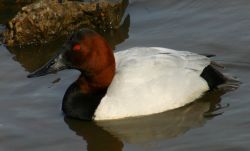 …but not so fine for humans.
…but not so fine for humans. 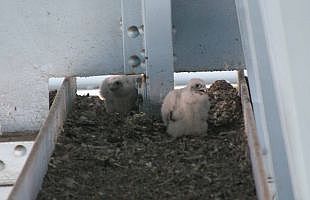 The good part about banding birds is that you find out where they end up. The sad part is you sometimes find out they are dead.
The good part about banding birds is that you find out where they end up. The sad part is you sometimes find out they are dead. 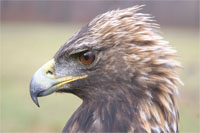 Last night I went to
Last night I went to 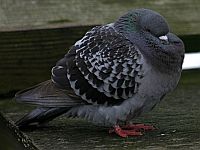 It snowed here all day until sunset. By lunchtime there was more than an inch of snow. Over at Pitt the only birds I saw were pigeons and they were doing something unusual. They were foraging on the sidewalk instead of on the grass.
It snowed here all day until sunset. By lunchtime there was more than an inch of snow. Over at Pitt the only birds I saw were pigeons and they were doing something unusual. They were foraging on the sidewalk instead of on the grass.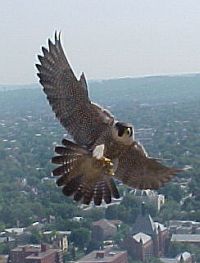
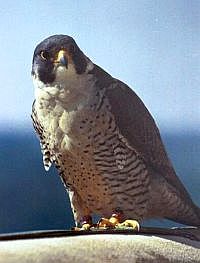 Anyone who talks to me about birds knows that I am fascinated by peregrine falcons. This obsession started with the individuals pictured here.
Anyone who talks to me about birds knows that I am fascinated by peregrine falcons. This obsession started with the individuals pictured here. 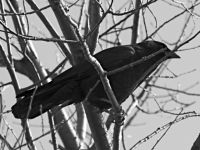 6:45am. Sunrise was still 45 minutes away. “I hear
6:45am. Sunrise was still 45 minutes away. “I hear